Another Twelve Years
Hungarian Newsreels and the Invasion of Czechoslovakia in 1968
This report has just arrived from Prague. Following the days at the end of August, the daily routine of life slowly returns. In the first days of September, some traces of attempts for blocking the traffic were still visible here and there, like burnt-out buses and various gangs of people. A typical picture: groups gathering in the streets and squares, arguing sometimes more aggressively, sometimes rather softly. The soberness, the traditional friendship of the nations in fraternity, the discipline of the military corps and the activity of the Party and of the governmental organizations of Czechoslovakia do overcome difficulties. The networks of traffic and communication work. People calmed down, doing their job again. The Prague Airport, which was closed down for a while, re-enters the air traffic. Planes heading to the five continents can carry new, reassuring news of consolidation.
So begins the commentary of the weekly Hungarian Newsreel of the 37th week of 1968. [1] The film, published in early September of that year, depicts the streets of the Czechoslovakian capital as a peaceful place, spotted with only a few traces of the earlier turbulences. Apart from several burnt-out vehicles, we see citizens, soldiers, and police forces chatting in sunny open-air spaces with pleasant smiles on their faces. In these images, men and women hurry to perform everyday tasks, while children lie in prams or peek playfully from an airstair next to an airplane. Everything seems peaceful and quiet, as if to assure the viewer that certain events about which they might have heard were only part of a temporary misunderstanding, without a bigger stake. The editor has good reason to neglect to mention that the Hungarian People’s Army was involved in a military action invading the country, an event that was nowhere near as delightful as the scene presented here. Even though he cannot skip the news as a whole, he hides and reshapes the details, creating a new narrative already in fiction.
1_That Summer Night
During the night of August 20, 1968, almost twelve years after the Soviet regime crushed the Hungarian revolution, the Warsaw Pact allies invaded Czechoslovakia to put an end to the Prague Spring and the country’s reformist trends. During the joint invasion, which was announced as a military training exercise with the code name Operation Danube, Soviet troops were accompanied by the military forces of Hungary, Poland, East Germany and Bulgaria. Among many other serious consequences, the events of Operation Danube helped to preserve the long-term power of communist governments in the region through the introduction of the Brezhnev Doctrine. [2]
Since the historical details of the Prague Spring and its aftermath are well researched, an examination of the representation of the same events by a special audio-visual publication genre of the period can also be interesting. This paper examines audio-visual and conceptual elements of the official newsreel series published by the Socialist state of the Hungarian People’s Republic between May and October 1968, focusing on the newsreel’s representation of the time of the intervention. This paper suggests that the official media of the regime led by János Kádár dealt with this topic in a highly sensitive fashion because of possible echoes of the 1956 uprising, choosing editorial tactics of reticence instead of explanation.
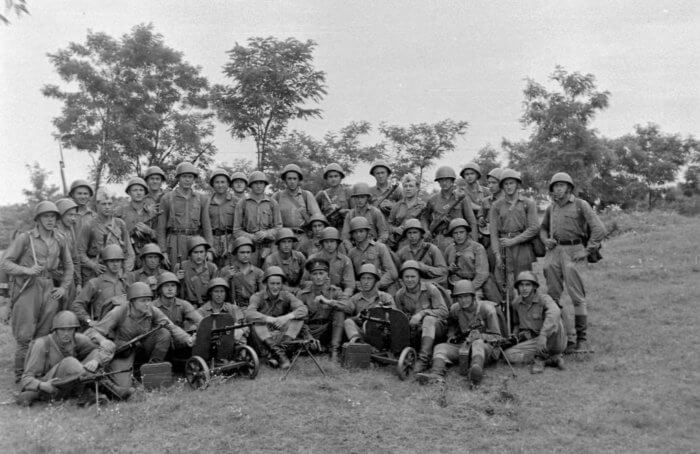
2_Lesser-Known Treasures: Newsreels of Hungary
The production of newsreels is a well-established tradition in Hungary, which started at the dawn of the 20th century and continued under each succeeding political regime. The first-known Hungarian cinematographic pioneer who recorded an event of public interest was Béla Zsitkovszky in 1906, and the first company publishing regular newsreels was Kino Riport before World War I. During the war years, the huge demand for ‘actualities’ turned the small industry into a booming business. Several printed papers, like The Evening (Az Est), released newsreel series as visual supplements to their printed material. When the short period of the Republic of Councils in Hungary was set in 1919, the first professional propaganda news series appeared under the title Red Report (Vörös Riport), of which 20 issues survive to this day. After 1920, the time when the Horthy regime came into power, the need for establishing official institutions carrying audiovisual state propaganda became stronger, in parallel with European tendencies. The state newsreel series of the silent era was first published by the Hungarian Film Office (Magyar Film Iroda) in 1924, and was screened as a compulsory program before the feature presentation in every screening room from 1926. When sound was introduced in 1931, the publication was re-named the Hungarian World Newsreel, marking an aspiration to join the global network. Newsreels were key means of communication between the World Wars, and the Hungarian government invested large sums of money into their modernization, and into the development of a method of keeping this medium in the frontline of the European news industry. Because of the newsreel’s strategic role in propaganda, in 1944, the national socialist Arrow Cross Party seized the production studio, which had begun to publish editions of the Hungarian Newreels filled with extremist ideology, very similar to the Deutsche Wochenschau of the period in content and tone. [3]
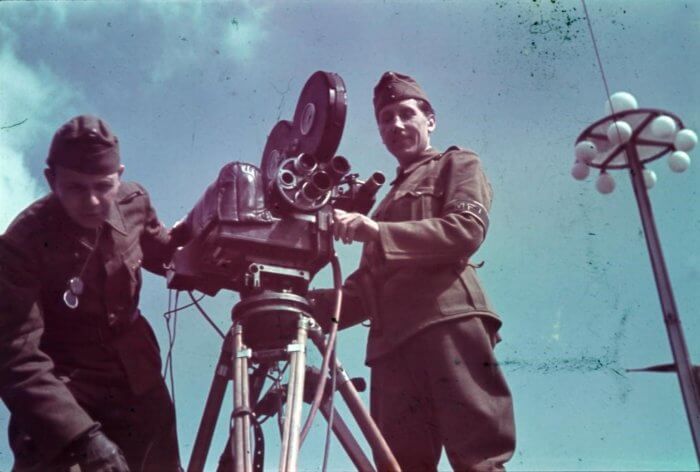
After the short years of pluralism and competition between 1945 and 1947, when almost every party ran its own production company, the Communist regime soon successfully managed to monopolize this branch of media. A statute passed by the government ordered compulsory screenings of the official Hungarian Newsreel beginning on March 19, 1948. With the nationalization of the film industry, a freshly established firm was given the responsibility of production, beginning in 1950 and extending until the political changeover in 1989. The Hungarian News and Documentary Film Factory (Magyar Híradó és Dokumentumfilmgyár) was a professional and well-equipped studio that preserved a number of practices based on its predecessor’s experiences. A substantial body of newsreel heritage produced by the country was produced during the next decades, until the collapse of the genre in 1991. Competition with television and a changing political system caused a double shock that killed the medium for good.
Hungary is one of the European countries where a valuable collection of national newsreels has survived in relatively good shape through the chaotic years of wars and revolutions. The Hungarian National Film Archive maintains a website where digitized copies are freely available for viewing. [4] This extensive yet rarely researched collection is a source of priceless cultural heritage, which treasures not only the memory of historical events, cultural values, and interdisciplinary knowledge, but also the creative imprints of political intentions.
3_The System of Silence
An analysis of the techniques and forms of media argumentation is essential for understanding the complex picture surrounding the turning points and meanings of 1968. From a qualitative and quantitative analysis of the newsreel series published during the of six months extending from May, the time of the Paris riots, until October, the returning of the Hungarian troops, certain tendencies become clear:
- The news generally avoids hard topics, and concentrates instead on light issues like culture, science, and sport.
- The actual times and dates of the events are rarely provided; editors instead aim at creating an atmosphere of eternal knowledge.
- Domestic news has a significant predominance over international reports.
- The rhetoric of the commentaries always corresponds to the Socialist ideas declared by the state.
- Creative solutions break the strict structure of the news genre (e.g., humorous scenes, news presented by actors, and longer scenes from theater plays).
By comparing formal characteristics of the examined clips with the news values of classical journalism, strong differences can be detected. In the editorial guidelines of the newsreels, a special ritual manner seems to be introduced to inform and orient the audiences according to the interests of the central propaganda. In most of the cases, these special audio-visual texts fit the original genre in focus and tone of narration, but differ in completeness. The audience cannot get full answers to the basic ‘5W1H’ question-paradigm of news journalism (What happened? Who did it? When did it take place? Where did it take place? Why did it happen? How did it happen?), so the direct function of information transfer becomes damaged. The results of our content analysis suggest that the main characteristic of the collection of Hungarian Newsreels is the capability of sustaining attitudes instead of spreading factual knowledge. Therefore, the ‘ritual view’ of communication studies is recommended as an ideal frame of research. This theory states that news is directed not toward the spreading of messages in space but toward the maintenance of society, through the call for participation and the representation of shared beliefs. According to James Carey, who contributed a great deal to theories of the ritual paradigm of news:
Under a ritual view, then, news is not information but drama. It does not describe the world but portrays an arena of dramatic focus and action; it exists solely in historical time; and it invites our participation on the basis of our assuming, often vicariously, social roles within it. [5]
While watching the newsreels’ images, the audience is orientated to the system of society and the world of specific symbols and rituals. The less democratic the political system’s values are, the stronger the ritual tendency of the newsreels is. This way, cinema-goers find safe connections to the age they live in, reflection upon (and often correction of) their own views, state-controlled inspiration, and intellectual guidelines.
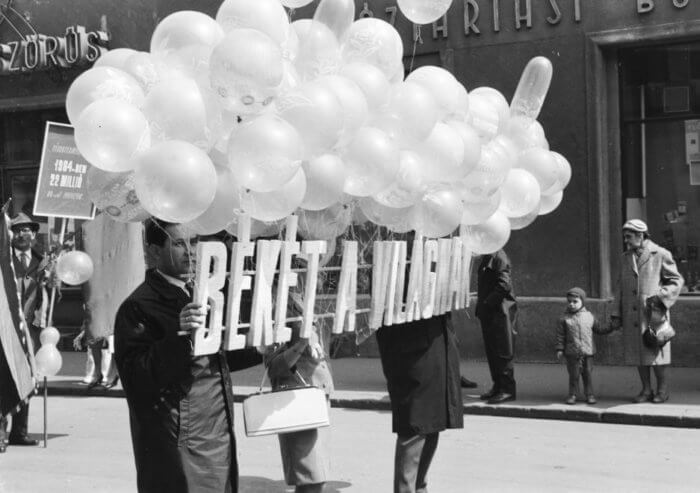
From this concept, we understand the soft content structure demonstrated in an excerpt of a two-month period below. The average length of a newsreel is between ten to eleven minutes and one package collects five to seven different news items.
Hungarian Newsreel, August 1968
| Date of publication | Title of news item | Topic | Domestic or International |
| 32nd week | World Festival of Youth and Students | Culture, Politics | Domestic |
| In the cotton factory | Economy | Domestic | |
| Hortobágy in the fine arts | Culture | Domestic | |
| News from abroad (Racist riots in Cleveland, Archeology in Egypt, The hydroplane, Show jumping in West Germany) | Politics, Culture, Science, Sport | International | |
| Alfonzó in the pub | Acted scene | Domestic | |
| 33rd week | Budapest, 11th District | Culture | Domestic |
| A foreigner at Lake Balaton | Acted scene | Domestic | |
| In Yugoslavia with tourists | Culture | International | |
| 34th week | City of Nagykőrös | Culture | Domestic |
| Press Athenaeum is 100 years old | Culture | Domestic | |
| Workshop secrets: blueprinting | Culture | Domestic | |
| Budapest on the Ocean [the first Hungarian cruise ship] | Science, Economy | Domestic | |
| 35th week | Budapest, 1st District | Culture | Domestic |
| Bibliotheca Corviniana | Culture | Domestic | |
| Rubberhair | Economy | Domestic | |
| Useful machines | Economy | Domestic | |
| Exhibition of Venetian art | Culture | Domestic | |
| Algeria: on traces of the past | Culture | International |
Statistics:
- Domestic items: 15 (83.33%), International items: 3 (16.66%)
- Culture items: 12 (5.17%), Economy items: 3 (17.39%), Political items: 2 (8.69%), Acted scenes: 2 (8.69%), Science items: (8.69%), Sport items: 1 (4.34%)
Remarks: The content of the month of August 1968 highlights national values (art, places, traditional professions) and the economic stability of the country. The news items about the modernization of the country reflect the reformist trends of the New Economic Mechanism (NEM), which was introduced on January 1, 1968. The extent of the political content and the transparently acted, entertaining scenes is the same. International connections are confined to the friendly, Socialist states; joyful pictures of the World Youth Festival in Sofia; and several touristic attractions of Yugoslavia and Algeria. The tone of commentary during these scenes is smooth and lighthearted. The only hard news item is about racist riots in the US; this contains strongly critical remarks. The invasion of Czechoslovakia — the most important event of the month — is completely missing from the news coverage.
Hungarian Newsreel, September 1968
| Date of publication | Title of news item | Topic | Domestic or International |
| 36th week | This happened 50 years ago | Politics (archive material with new commentary) | Domestic |
| Sport | Sport | Domestic, International | |
| Margaret Island, Budapest | Acted scene | Domestic | |
| 37th week | Budapest Autumn Fair | Economy | Domestic |
| Sárvár city | Culture | Domestic | |
| Workshop secrets: making of a barrel | Culture | Domestic | |
| Harp | Culture | Domestic | |
| Report from Prague | Politics | International | |
| French fusion bomb | Science, Politics | International | |
| Speed-boat race | Sport | Domestic | |
| 38th week | Százhalombatta city | Culture | Domestic |
| Aurél Stromfeld was born 90 years ago | Military | Domestic | |
| Memories of the Árpád dynasty | Culture | Domestic | |
| Before the Olympic Games | Sport | International | |
| International news [Earthquake in Iran, new design of furniture in Paris, shipping between Rotterdam and England, Japanese ballet group in the Soviet Union, speed boat race] | Natural disaster, Science, Culture, Sport | International | |
| 39th week | 50 years ago | Politics (archive material with new commentary) | Domestic |
| Ferenc Medgyessy sculptor | International | Domestic | |
| Leather factory in Pécs | Economy | Domestic | |
| Economic and Law Press | Economy, Culture | Domestic | |
| Taxi | Music clip | International | |
| Kecskemét city 600 years old | Culture | Domestic | |
| 40th week | 50 years ago | Politics (archive material with new commentary) | Domestic |
| III. Military Film Festival | Culture, Military | Domestic | |
| Zsolnay porcelain factory is 100 years old | Culture | Domestic | |
| International news [Soviet space capsule, military training in West Germany, napalm, floods in South England, training camp in California for athletes, high jump] | Science, Military, Natural disaster, Sport | International | |
| Riding-school in Tata | Sport | Domestic | |
| You must know Spanish theatre play | Culture | Domestic |
Statistics:
- Domestic items: 21 (75%), International items: 7 (25%)
- Culture items: 11 (33.33%), Sport items: 5 (15.15%), Political items: 4 (12.12%), Economy items: 3 (9.09%), Military items: 3 (9.09%), Science items: 3 (9.09%), Natural disasters: 2 (6.06%), Acted scene: 1 (3.03%), Music clip: 1 (3.03%)
Remarks: The rate of domestic and international news in the month of September 1968 is disproportionate. Three-quarters of the content is domestic, one-quarter is international. The presence of sports is stronger than the presence of politics, while economy-related news is traditionally important. Under the title “Taxi,” performed by a pop singer, a special format is included, which is a rare example of embedded music clips. The lack of hard news is again significant.
4_Parallel Worlds
There is only one other mention of the military activity in October, besides the above-quoted single news item from September that dealt with the Prague Spring. The sequences about the returning soldiers in the newsreel of the 44th week express feelings of relief and victory. The cinema-goer encounters images of happy young men who have traveled through the country to return home to their beloved ones after 62 days of absence. Ironically, the newsreel reports about their return, without previously having reported their departure. The commentator neglects to mention the actual aims of the trip, and leaves the event entirely unexplained, whether because it is considered a modern taboo, or because it is assumed to be common knowledge. The protocol of the official celebration for welcoming soldiers also verifies the validity of the ritual theory applied in the paper’s interpretation.
In sharp contrast with the presentation of the Prague Spring, the news about demonstrations in Paris formulates strong criticism and uses a lot of negative expressions. The commentary of the report from the 23rd week (June 1968) is worth comparing with the text quoted at the beginning of the essay:
This report, which has just arrived, shows Paris in the last days of May. Vehicles are forced to stop everywhere in the country and the piles of litter become higher and higher. Prime Minister Pompidou and his government are pressed by the events to consult and bargain all the time. De Gaulle dissolved the National Assembly, and new elections were announced. People turn against the politics of the government and the whole system of the personal power. The inner districts and outskirts of Paris become real frontlines for several nights. Meanwhile, students who are influenced from many sides bring down trees in Quartier Latin and build barricades of cobblestones of the streets. This is how dawn of Whitsun looks like in Paris, and the whole word observes where France goes. [6]
During this voice-over, a sinister score plays, and we see shots of chaos, litter, downed trees, the landscape of a destroyed city, and scenes of street fights with injured and bleeding participants. This news item is one of the most intense visual materials of the year, and is a strong exception to the calm, balanced general tone of the general news.
The rest of the hard news items of the period are listed below:
21st week: De Gaulle’s visit in Romania.
22nd week: Hungarian visit in Belgium and protests against US military bases in Japan.
23rd week: Assassination of Robert Kennedy and the visit of the Indian government in Hungary.
25th week: Friendship and cooperation treaty signed by the Czechoslovakian delegation in Hungary.
27th week: János Kádár and the Hungarian delegation in Moscow. [7]
29th and 43rd week: Reports about the work of the Hungarian Parliament.
Frequent reports about the Olympic Games in Mexico City are also an important highlight of the year.
Between the 29th and 43rd weeks (from the middle of July through late October), meaningful silence can be detected. Usage of structural silence as a propaganda tool is a less discussed but still essential ingredient of effective media persuasion. In spite of the fact that beneficial silence can hide important details, its overuse can lead to mistrust. The changing role of the newsreel genre became evident in Hungarian theoretical discourse in the late 1960s, not independently from this phenomenon. Filmkultúra, the prestigious periodical of the era, published long and regular discussions dealing with the problem for over a decade beginning in 1970. [8] The authors — both practitioners and theorists — argued that the newsreel genre must be retained, but that its content needed serious revision. They tried to define the format in comparison to television news, and they stated that the interest of the disappointed audience could again be raised with some critical voice. This voice, they said, should be further from the requirement of being topical, and closer to the style of classical documentaries.
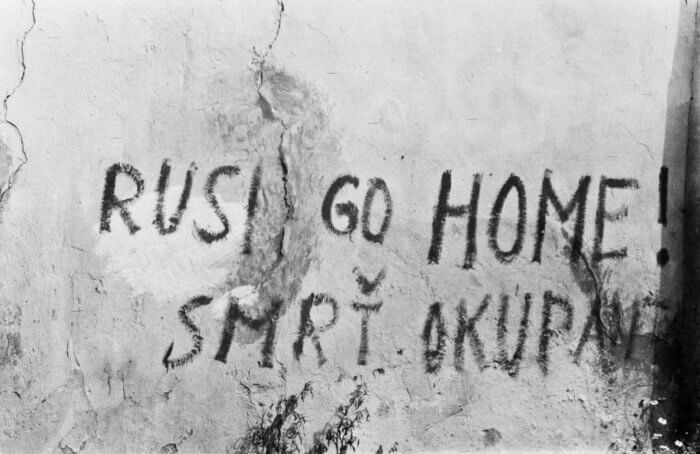
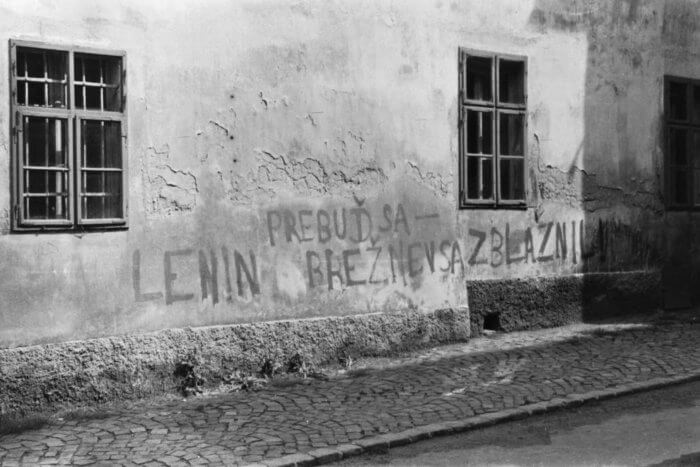
5_Late Resonances
For many years, the memory of the invasion of Czechoslovakia has continued to evoke vivid but artificially suppressed feelings among its participants. Film director Zsolt Balogh shot a documentary based on interviews with ex-soldiers almost twenty years after the actual events transpired. In this film, Balogh managed to provide a panorama of the instinctual and sincere reactions of the average people who were involved in the military maneuver. 1968 was released in 1989, at the very moment of the fall of the communist regime in Hungary. Thus, its significance in destroying taboos and starting to build a structure of free speech within new democratic frames is essential. In one article, scholars András Murai and Eszter Zsófia Tóth examine this film from the point of view of the psychological motivations shown by the interviewees during the storytelling process. [9] The authors argue that most of the speakers emphasize that they were forced to take part in the action without any reasoning, and that the whole experience was sudden and quite scary. In the speakers’ narratives, five major personality types emerge: The Victim, the Witness of History, the Fearful, the Emotional One who is acting for order, and the Expert. Despite their differences, the untold trauma, which caused remorse and the burden of a guilty conscience, is common among them. These were ordinary servicemen of the Hungarian People’s Army, who were either missing from the newsreels’ images, or showed up as smiling, victorious armorers on huge military vehicles.
Trailer of the film 1968: <https://www.youtube.com/watch?v=aDaISmkv05g&t=2s>
Apart from rare exceptions like the documentary mentioned above, the silence of Hungarian newsreels also extends to the after-ages of these non-fiction formats. While the key events between the end of World War II and 1989 (with a special focus on the revolution of 1956) were processed in numerous ways, and from different and sometimes very original angles, this (not insignificant) detail of the bigger picture still remains in the background. [10] The atmosphere and scenes of the archive newsreels of 1968, like hidden streams of a common consciousness, turn up in several fiction features, and at different points within the alternative scene. One example of the latter is the iconic clip of the Hungarian electronic dance band Anima Sound System’s hit song “68,” from 1997.
Anima Sound System: “68” <https://www.youtube.com/watch?v=TLR8WVa0Yhk>
6_Conclusion
This essay attempted to provide an analysis of the 1968 Hungarian Newsreel series. The theoretical framework of this research has been structured on the ritual theory of communication, which stresses the role of the media in maintenance of society through strengthening of shared beliefs instead of spreading data and information. Beginning with a short introduction into the history of the Hungarian newsreels, then arguing certain tendencies of the editorial guidelines applied in the 1960s, the paper concludes with a close examination of the news content of the months August and September 1968. The study has shown that the predominance of light issues and domestic topics was a method of escapism in a politically sensitive situation in the Eastern Bloc state. It was also shown that the newsreels used the tool of silence in representation of the intervention in Czechoslovakia to suppress possible echoes of the Hungarian uprising in 1956. In general, therefore, it seems that the newsreels of this year were unique because of this special struggle against the country’s own historical past. The role of the Hungarian Army during the military action was more than problematic, and the lack of its visual evidence aided the repression of traumatic memories for a long period of time. However, it is also crucial to see that newsreel production in Hungary, in accordance with international tendencies, has already shown the symptoms of the crisis in those years. Competition with television news forced newsreel filmmakers to find a new role for the medium, with a new structure of topics and new rhetoric — still in the frame of the Socialist political and cultural network.
_How to Cite
Janka Barkóczi. “Another Twelve Years: Hungarian Newsreels and the Invasion of Czechoslovakia in 1968” On_Culture: The Open Journal for the Study of Culture 4 (2017). <http://geb.uni-giessen.de/geb/volltexte/2017/13395/>.
_Endnotes
- [1] See Report from Prague, Hungarian Newsreel (1968/37, July 1968).
- [2] More about the Hungarian participation, see Miklós Kun, Prague Spring, Prague Fall. Blank Spots of 1968 (Budapest: Akadémiai Kiadó, 1999), 209–234.
- [3] More about the Hungarian newsreels of the period, see Janka Barkóczi, Ezerszemű filmhíradó. Vizuális propaganda Magyarországon 1930–1944 (Budapest: MMA – L’Harmattan Kiadó, 2017).
- [4] The website Filmhíradók Online is supplemented with a database which assists in easier and better-targeted searches. The database is not yet available in English, and the films are digitized and published only through 1958. The rest of the newsreels are kept in the collection of the National Film Archive for screening and research. These copies are marked for digitization and publication during the coming years. See <http://filmhiradokonline.hu/>
- [5] James Carey, Communication as Culture (New York/London: Routledge, 1992), 21.
- [6] Original commentary of the news item translated by the author of the article.
- [7] This is the only color film in the collection of this period.
- [8] See János Kenedi, “A korszerű híradófilm feladatai,” in Filmkultúra, July–August 1970 (1970/74), 52–58.
- [9] See András Murai and Eszter Tóth Zsófia, “A csehszlovákiai magyar katonai bevonulás emlékezete,” in Napi történelmi forrás, August 21, 2017, accessed September 1, 2017, <http://ntf.hu/index.php/2017/08/21/a-csehszlovakiai-magyar-katonai-bevonulas-emlekezete/>.
- [10] More about Hungarian documentaries on the national history, see Réka Sárközy, Elbeszélt múltjaink. A magyar történelmi dokumentumfilm útja (Budapest: 1956-os Intézet – L’Harmattan Kiadó, 2011).



